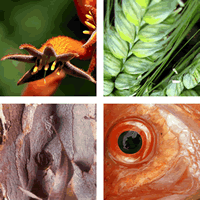DECLARED PEST RATE
What is a DPR and how does it relate to an RBG?
Under the Biosecurity and Agriculture Management Act 2007 (BAM Act) the State can raise a Declared Pest Rate (DPR) from landholders in specific areas, and matches the funds raised from the rate dollar-for-dollar.
The combined funds are made available to Recognised Biosecurity Groups (RBG), who provide support to landholders to manage widespread and established declared pests. Under the BAM Act landholders are responsible for controlling declared pests on their own land.
RBGs conduct pest management awareness initiatives and education as well as coordinate and undertake pest management activities across land tenures.
Public funds provided to RBGs must be spent on activities detailed in each RBG’s annual Operational Plan, which is developed in consultation with the RBG’s local community.
RBGs must produce an annual report which details what the DPR and the State’s matching funding were spent on in an operational year. These are publicly available on this website.
What is a declared pest?
A declared pest is an animal or plant species that causes unwanted impacts on people, the economy or environment, and has therefore been declared under the Biosecurity and Agriculture Management Act 2007.
Declared pests are either not allowed into WA, or if they have become widespread and established, are subject to control or keeping requirements to minimise impact and spread, as it is often not possible to eradicate these pests.
This is why landholders and managers must be involved in the ongoing control of these pests on their property, in order to reduce their negative impacts on the landscape. Examples include narrow leaf cotton bush, Paterson’s curse, blackberry, cape tulip, bridal creeper, some cactus species, wild rabbits, feral pigs, foxes and wild dogs.
The presence and impact of these pests will vary across the State.
How long has the DPR existed?
The State has been collecting a DPR in WA’s pastoral regions since 2014. Prior to that, it was collected as the Agriculture Pest Rate under the Agriculture and Related Resources Protection Act 1976.
The DPR and RBG model has since been extended to the agricultural and south west regions of the State.
Does everyone in Western Australia have to pay a DPR?
No. The DPR is raised in prescribed areas, typically defined along local government boundaries.
The properties that are rated in each of these prescribed areas varies across the State.
The DPR is only raised in areas where there is an RBG.
How do I change my address?
Please call RevenueWA on (08) 9262 1199 or for country callers on 1300 368 364.

